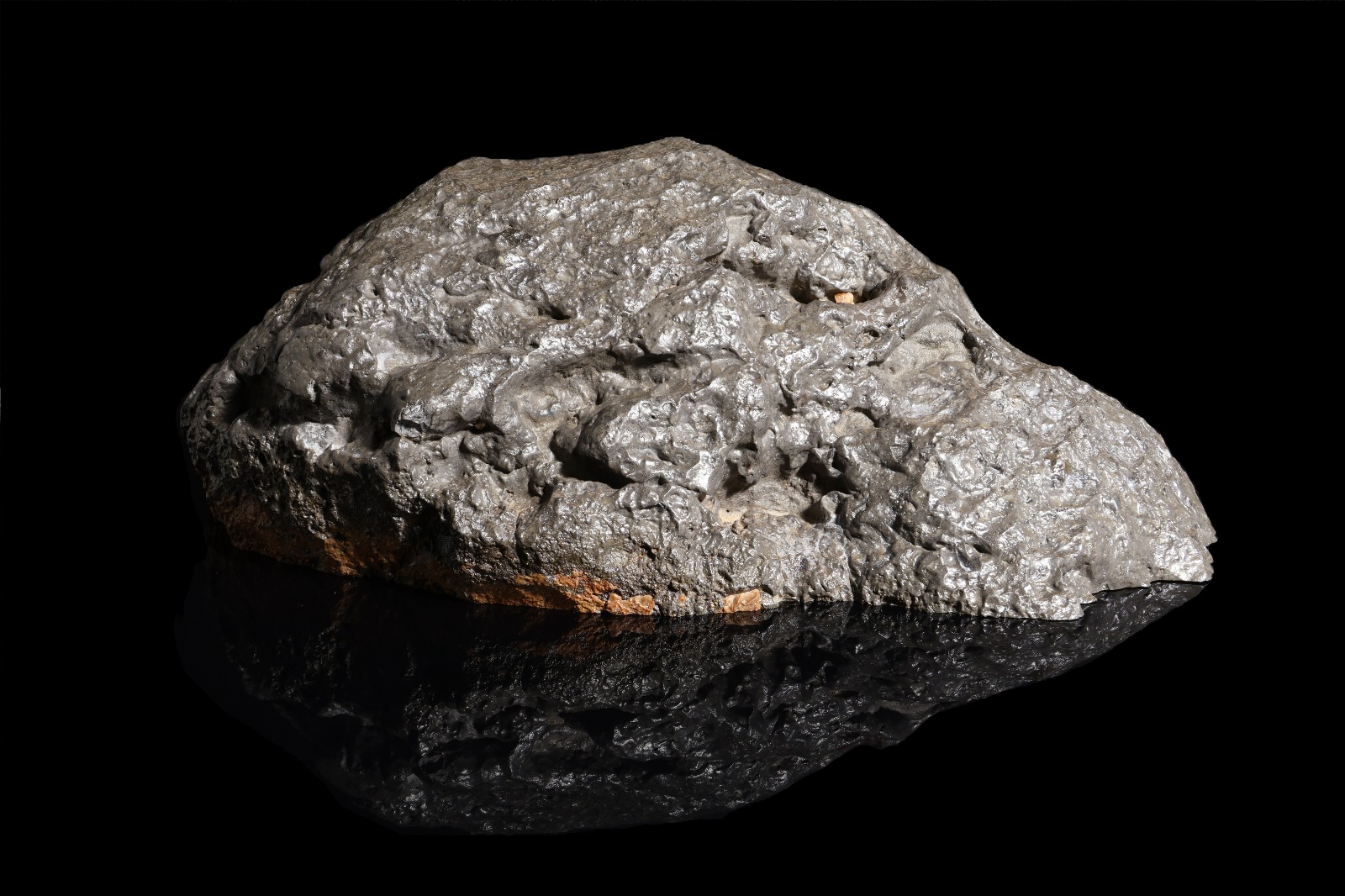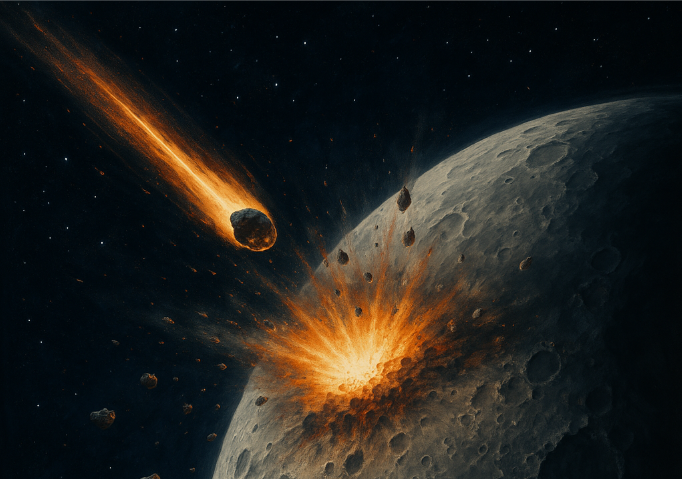Origin of the Meteorite -
Between 1969 and 1972, the Apollo missions brought approximately 382 kilograms of lunar rocks back to Earth. The total cost of the Apollo program reached around $23.9 billion. That means each gram of lunar material brought back cost roughly $62,565 in today’s terms.
Now, however, you have the opportunity to own a piece of the Moon that arrived on Earth through natural cosmic events. When another celestial body struck the lunar surface, material was ejected beyond the Moon’s gravitational field — and after a long journey through space, this fragment eventually landed on Earth as a meteorite.

Formation and Origin
Lunar meteorites are created by massive asteroid impacts that blast lunar surface material into space. These fragments travel through the solar system until some are caught by Earth’s gravity and survive the fiery descent through the atmosphere to reach our planet's surface.

This specific lunar meteorite, now in your hands, is classified as a feldspathic melt breccia. This means it’s composed primarily of feldspar minerals, especially plagioclase (typically anorthite), indicating it originated in the Moon’s crust, where bright rocks known as anorthosites dominate.
It’s also a breccia — a rock made of older lunar fragments fused together by impact melt. The original rocks (like anorthosites) were shattered by a powerful collision, partially melted by the heat, and then re-solidified together. This mixture later solidified in the Moon’s shallow crust and was launched into space by another impact, ultimately becoming a meteorite that landed on Earth.
Discovery
This specimen was discovered in southern Algeria, near the location of El Atchane. In March 2025, it was purchased by Milan Zvara and Zdeněk Schneider from a local meteorite hunter named Yahdiha. It was then sent to Professor José Garcia in the Canary Islands for expert analysis and international classification. Through this process, it was officially named EL ATCHANE 024 and added to the international database of meteorites managed by the Meteoritical Society.

Characteristics
EL ATCHANE 024 is classified as a feldspathic melt breccia. In cross-section, it displays a fine-grained crystalline matrix with a melt texture that surrounds feldspathic lithic clasts (the lighter fragments) and related debris. The edges show partial fusion, blending the melted rock with the clasts.
The main minerals present include anorthite, olivine, orthopyroxene, augite, as well as accessory chromite and sulfides. These confirm its origin in the lunar crust and its exposure to intense impact melting.
Geochemistry:
- Olivine: Fa 27.3 ± 1.1 (n=3)
- Low-Ca Pyroxene: Fs17.6 ± 1.1, Wo3.6 ± 1.3 (n=3), FeO/MnO = 57 ± 4
- Augite: Fs23.3 ± 0.9, Wo20.6 ± 1.3 (n=2), FeO/MnO = 42–43
- Plagioclase: An96.3 ± 1.4 (n=6)
Under a microscope, one can observe signs of space weathering, shock veins, impact glass, and other features that speak to the meteorite’s violent cosmic history. Thanks to our end-cut presentation, this piece reveals both the fusion crust and its fascinating internal matrix — beautifully displaying its structure.
Investment Opportunity
Several key factors make this meteorite exceptionally valuable and promising for future appreciation:
- Less than 1% of all meteorites come from the Moon
- It is the largest known lunar meteorite in the Czech Republic (possibly even in Central Europe)
- It has an exceptionally well-documented history — from discovery to current ownership
- It is officially registered in the international meteorite database under the name EL ATCHANE 024
Only 8 slices of this meteorite exist — and there will never be more. Each one is a unique, unrepeatable piece of lunar history

